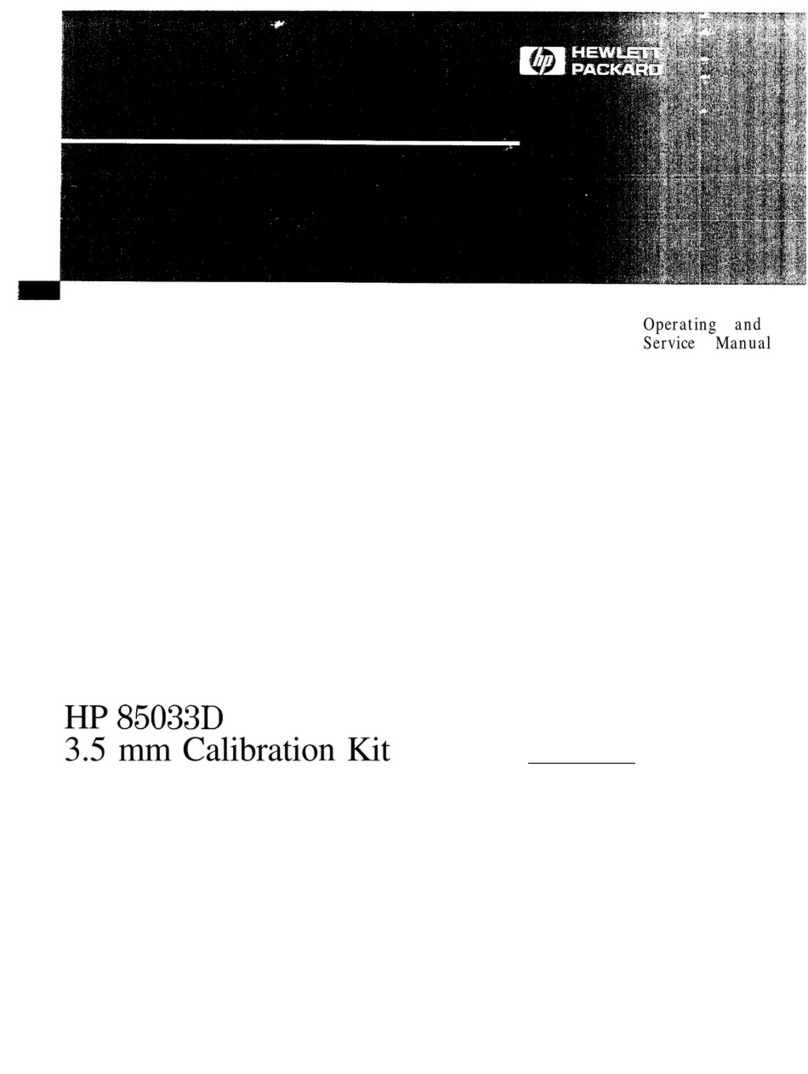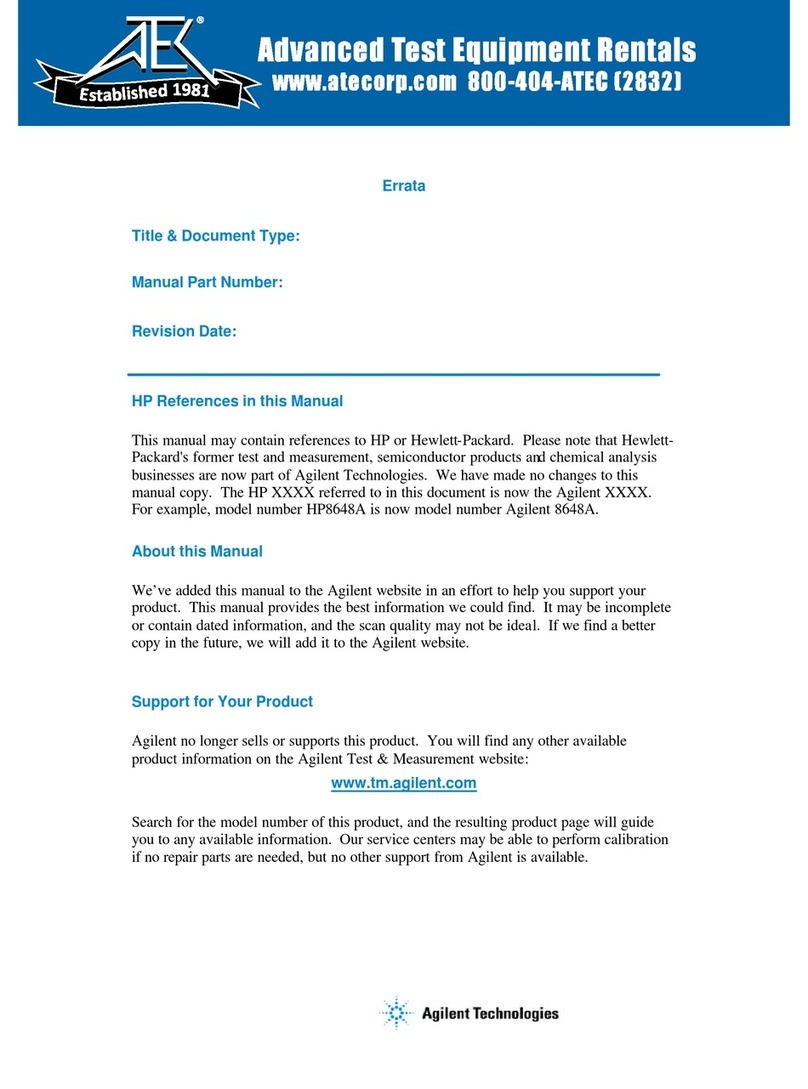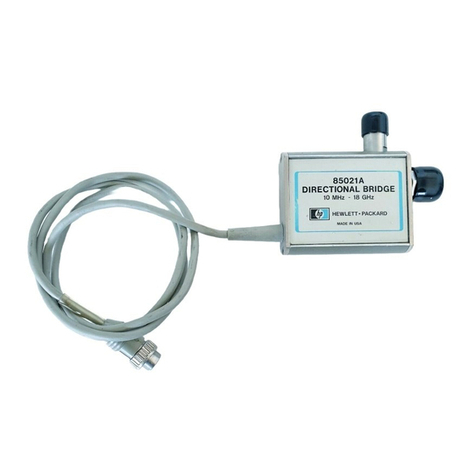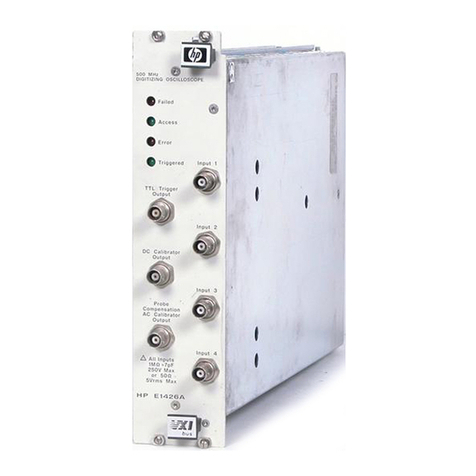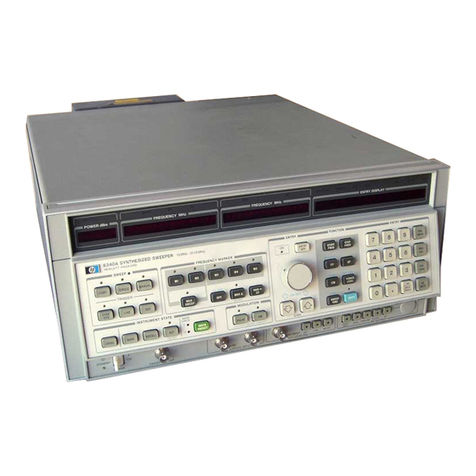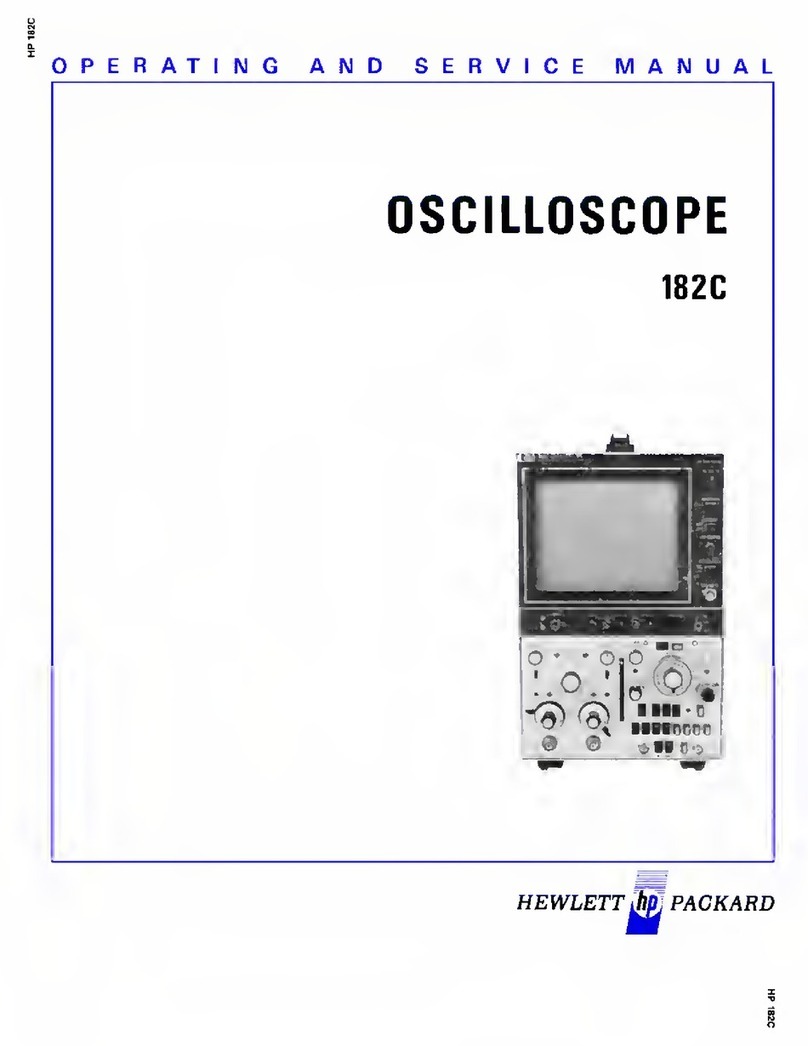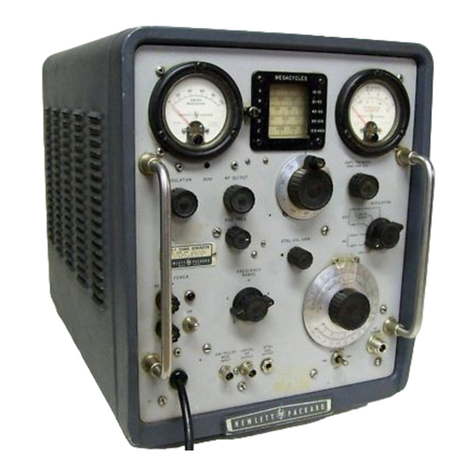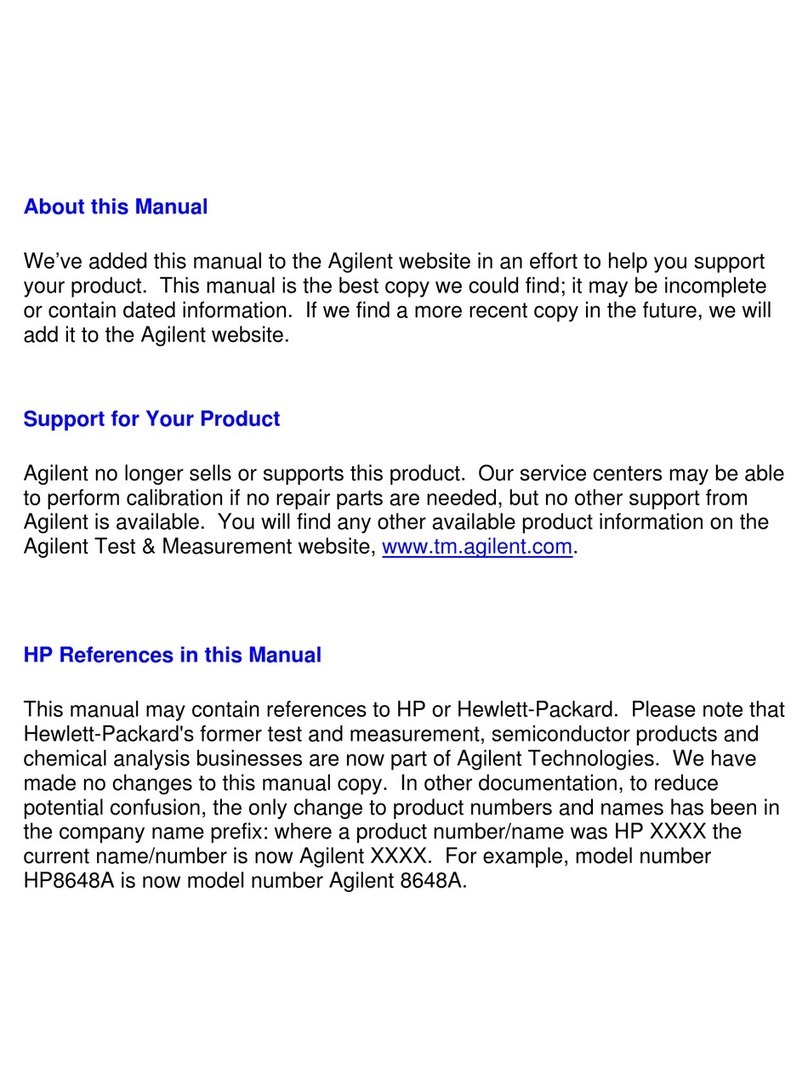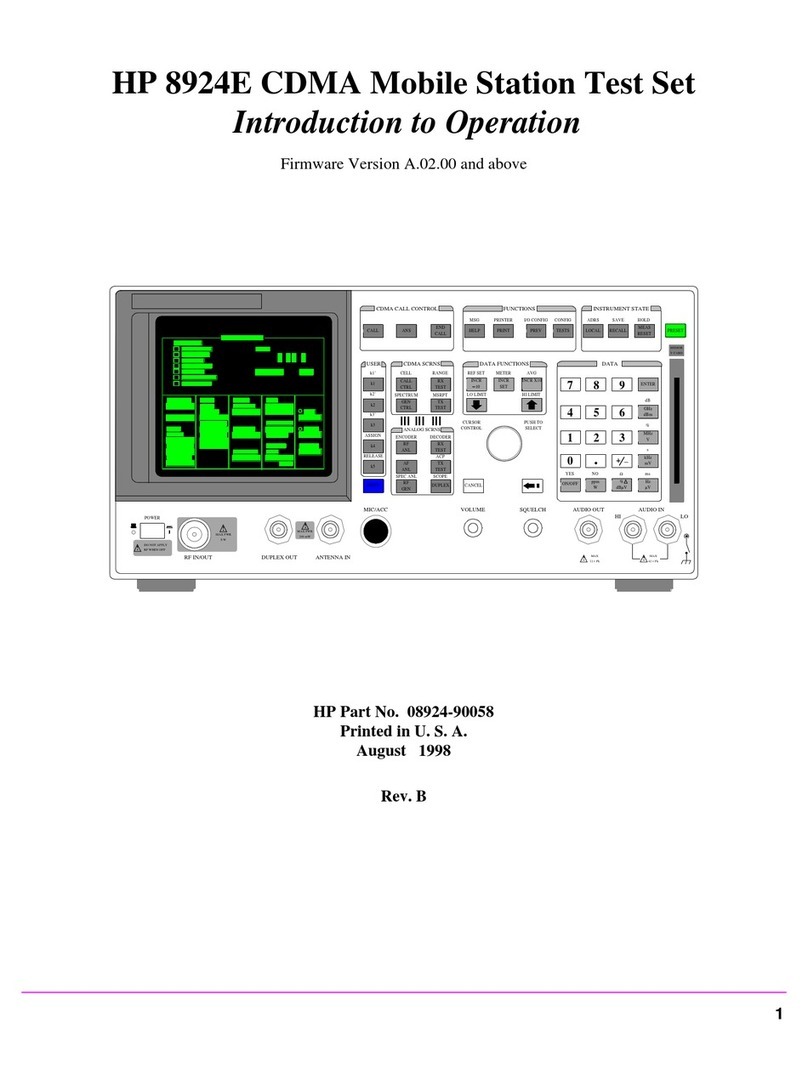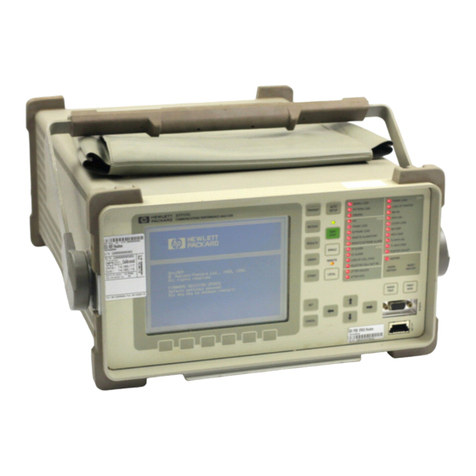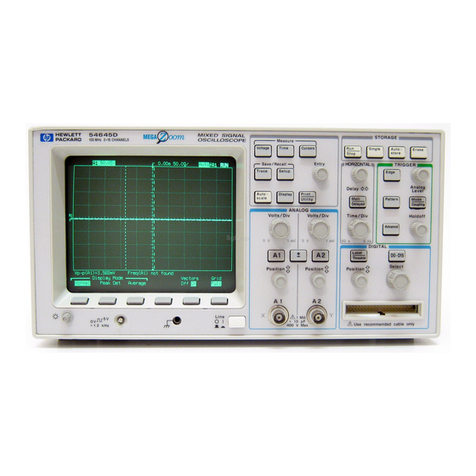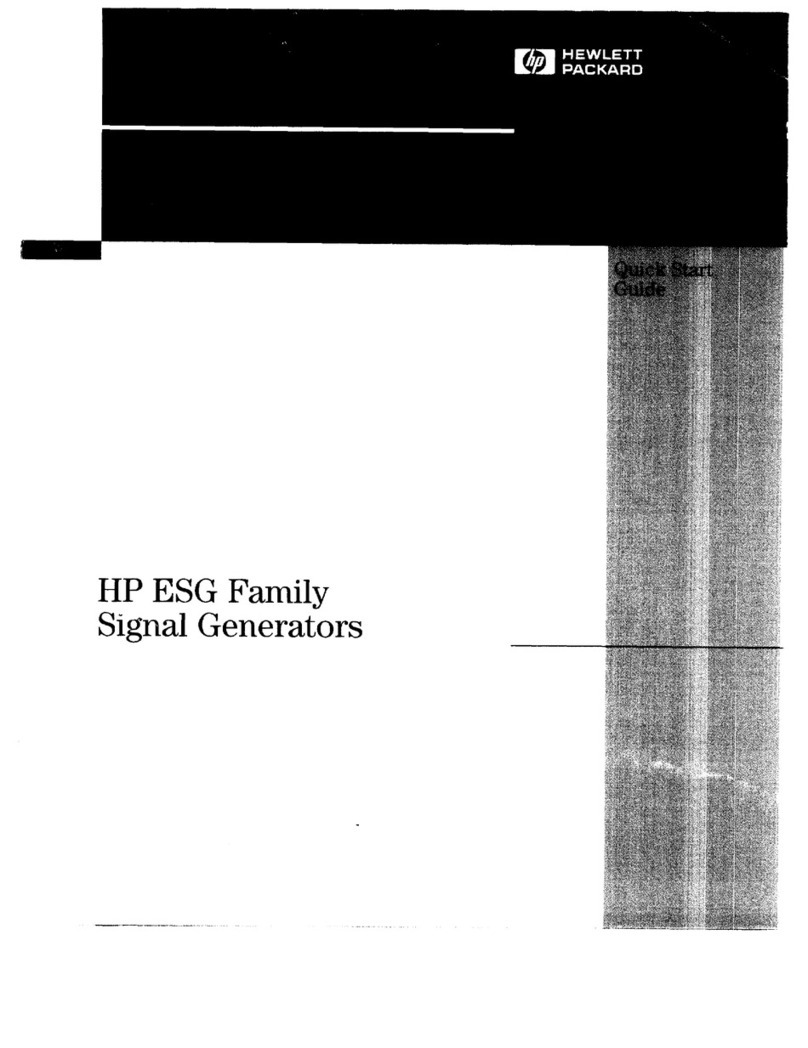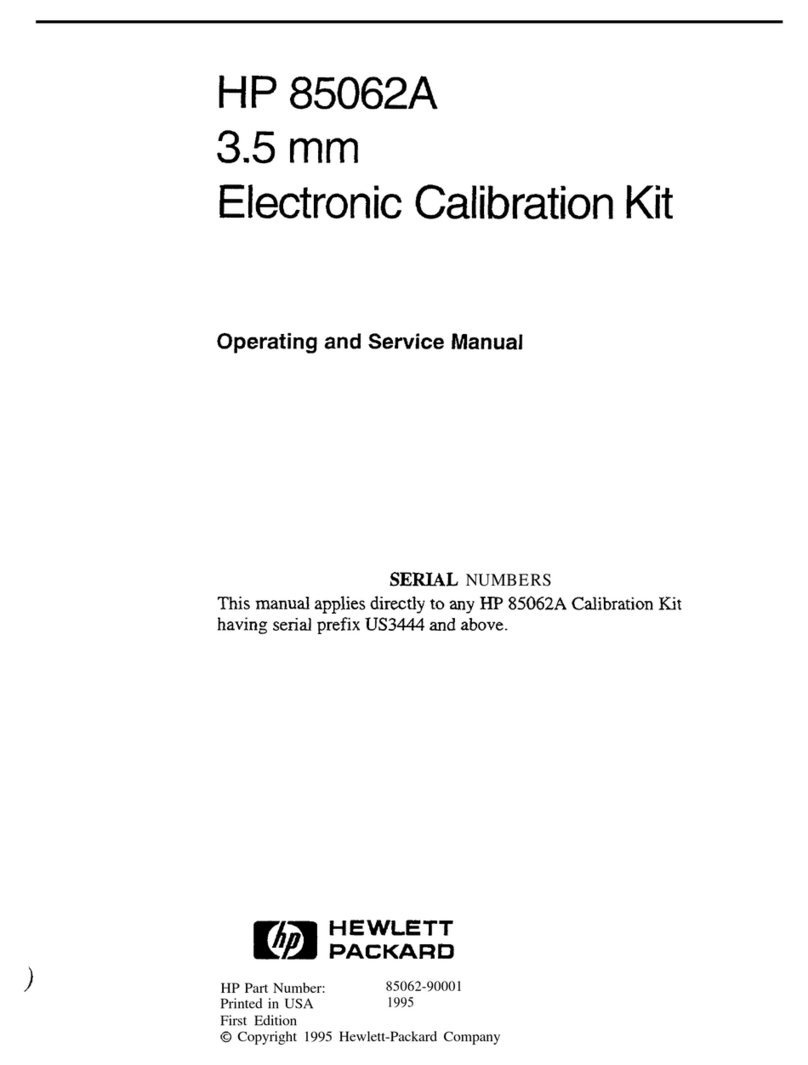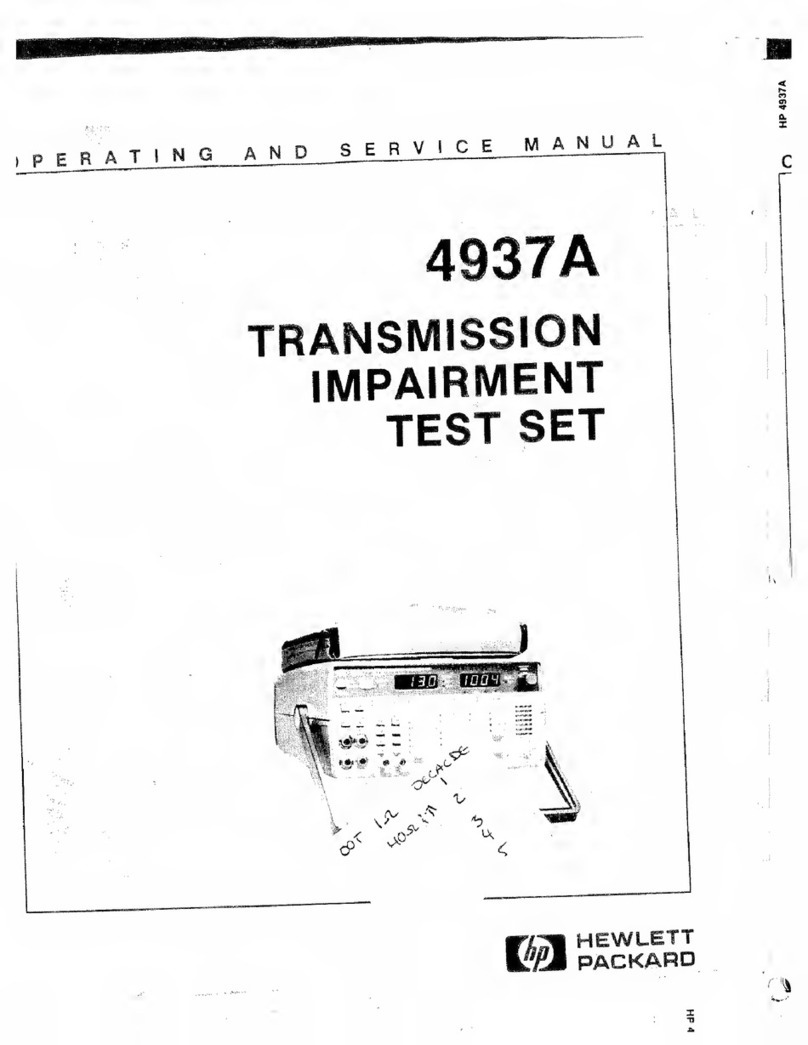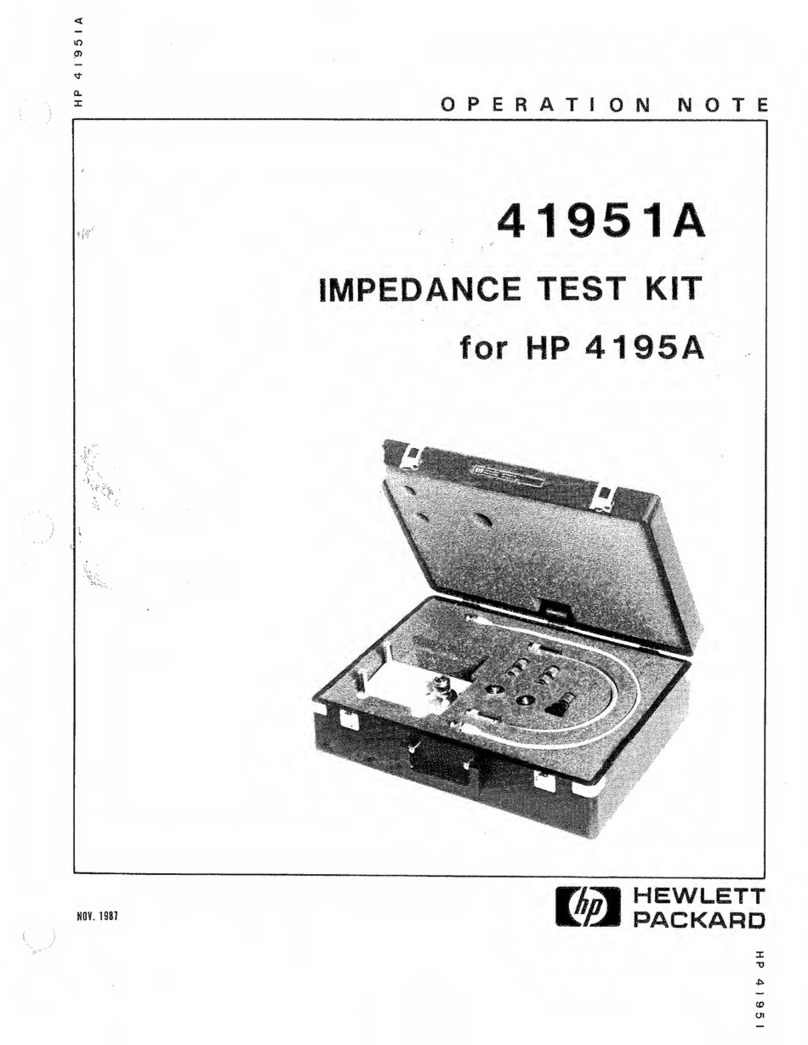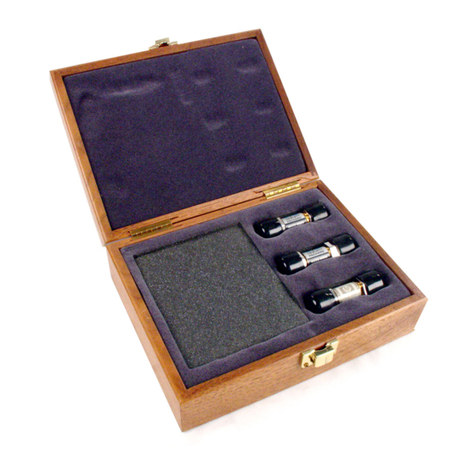
Digital Radio Testing HP 11757B
Connecting the HP
11757B to a BERT
The HP 11757B can work with many dierenttypes
of Bit Error Rate Test Sets (BERT). However, not all
BERT operate the same way and it is imp ortant for you
to understand how to correctly interface dierenttypes
of BERTs to the HP 11757B.
Triggering
The
4
RADIO SETUP
5
key can b e used to adjust the
triggering of the ERROR PULSE INPUT and ALARM
INPUT connectors to coincide with the BERTyou
are using. The ERROR PULSE INPUT line can be
terminated in ECL/75, TTL/75, or TTL/ 10k. In
addition, an ERROR PULSE INPUT variable threshold
can b e selected instead of ECL or TTL thresholds.
ERROR PULSE INPUT variable threshold is only
available in serial prexes 3235A and above. The HP
11757B will always trigger on the rising edge of signals
applied to the ERROR PULSE INPUT connector.
The ALARM INPUT connector is always terminated
in TTL/10k. However, the edge (p ositiv e or negative
going) that the Fader triggers on can b e chosen byyou.
Select the one that works with your BERT.
Error Pulse Signals during Out-of-Lock Situations
It is very imp ortant to understand what kind of
\ERROR PULSE" signal your BERT puts out when
the radio is out-of-lo ck. Ideally, when the radio is
out-of-lo ck, the BERT will put out a very fast stream
of pulses indicating a very high Bit Error Rate (BER).
If this is the case with your BERT, all you need do for
BER Criteria measurements is connect the \ERROR
PULSE" of your BERT to the ERROR PULSE INPUT
connector on the front panel of the Fader.
On the other hand, some BERTs turn o their \ERROR
PULSE" signal when an out-of-lo ck state is detected.
If this is the case with your BERT, you not only need
1-2












